
The weekend after Whit week, and I was back at Thirlmere. This time I’d parked at Steel End where, despite road signs to the contrary, the road is still open, although it is closed beyond that. The reason I’d chosen to come this way, was that last summer, when I’d been gleefully ticking off Wainwrights with abandon, I walked the boggy central spine of the Lakes, from High Raise to Bleaberry Fell, but I’d missed Armboth Fell, which lies to the east of the central ridge. (I use the term ‘ridge’ very loosely here!). After a lengthy spell of very dry weather, this seemed like the perfect opportunity to make that good.
Ideally, I’d have been starting the walk from the next car park north, at Dobgill Bridge, but, as I say, the road was closed. So instead I needed to use the permission path along the lakeshore to get to my intended starting point.
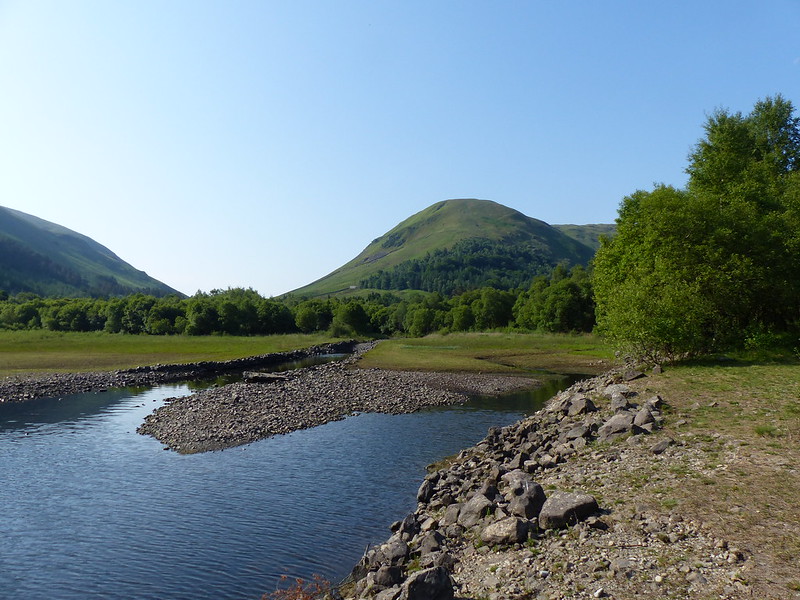
What a happy accident that was, since this path was lovely, and absolutely stuffed with wildlife, so that the walk (and, by extension, this post too) became a bit of a hybrid between my hill walking and my slow, local walks where I stop every few steps to snap away with my camera.
By the lake there were loads of birds: a Heron, Greylag and Canada Geese and lots of gulls. If I’d had a pair of binoculars with me, I’m might have been there for hours.

I think this might have been a juvenile sandpiper; it kept flying short distances ahead of me, so that I gradually gained on it, which strikes me as typical behaviour of a young bird.
This sandpiper…

…was nearby and making quite a racket, so I took it to be a concerned parent. Of course, I could be completely wrong.
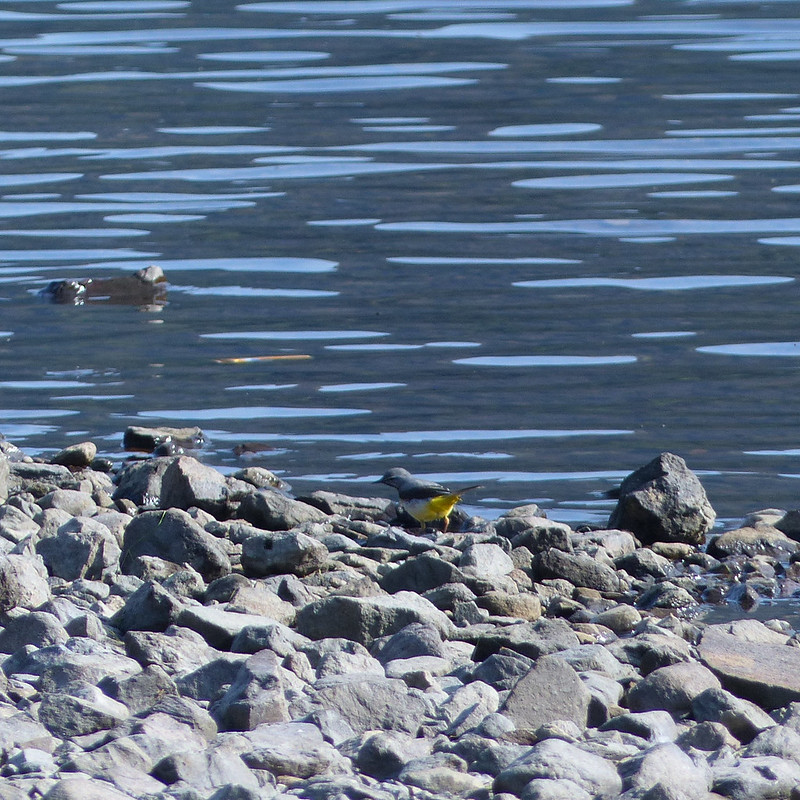



The path was soon away from the reservoir shore and in the trees and I was chasing after moths and butterflies, not always with success. In particular, there were some fritillaries about which I did eventually manage to photograph, but only from a considerable distance, so that the photos are not sufficient for identification purposes. Fortunately, I would get better chances later in the day.
The brambles were flowering in profusion, and that seemed to attract a host of insects of various forms.
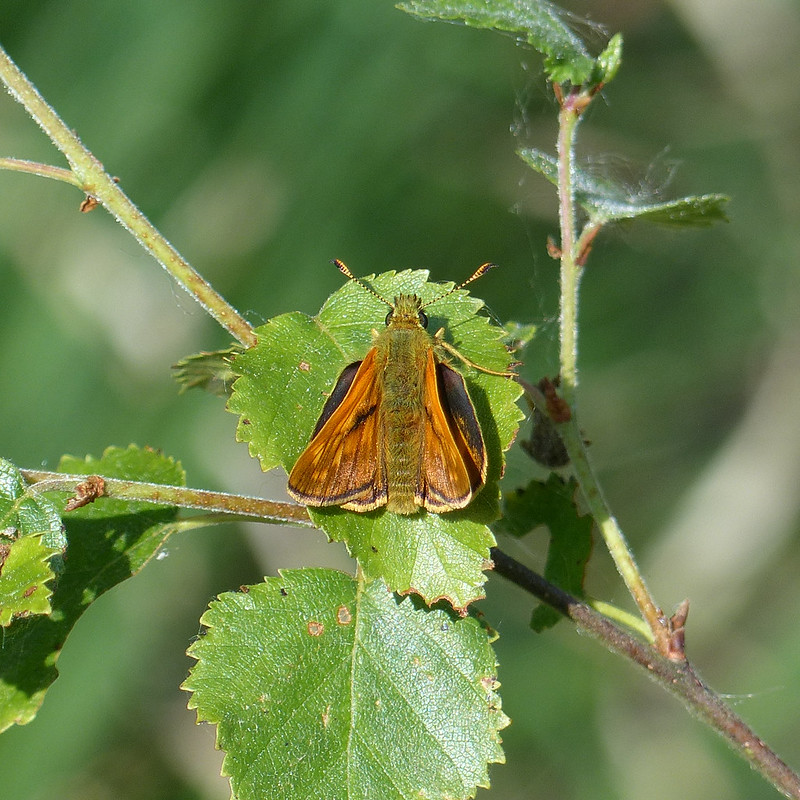

There were hosts of hoverflies and bees about, but they were extremely elusive, so whilst I have a lot of photographs, there’s only really this one which is up to scratch.

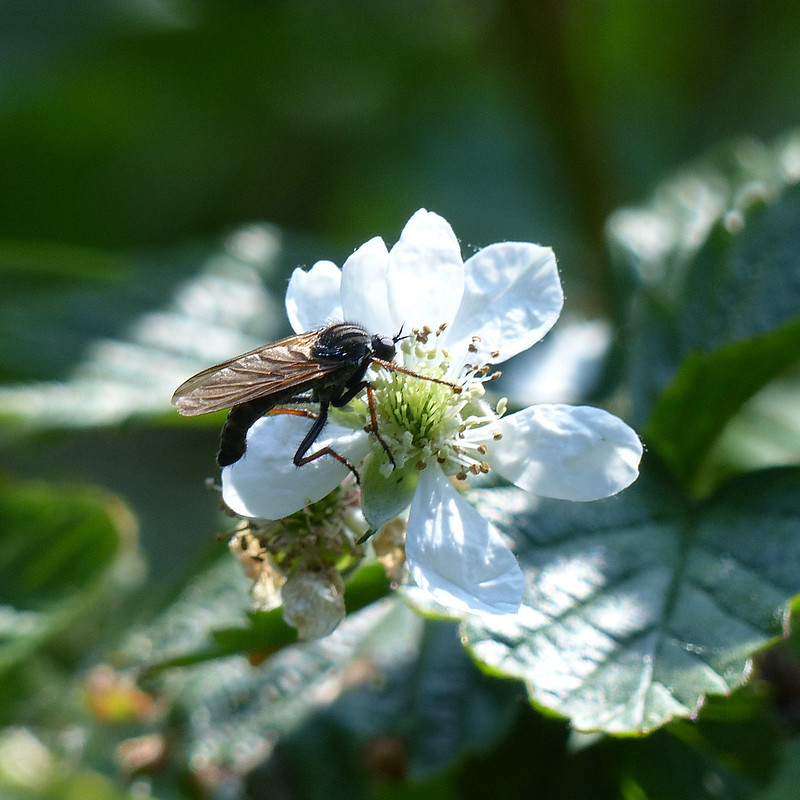


There were lots and lots of these about. They were constantly on the move, so I took loads of photographs, hoping that I would have at least one which was reasonably clear and sharp.
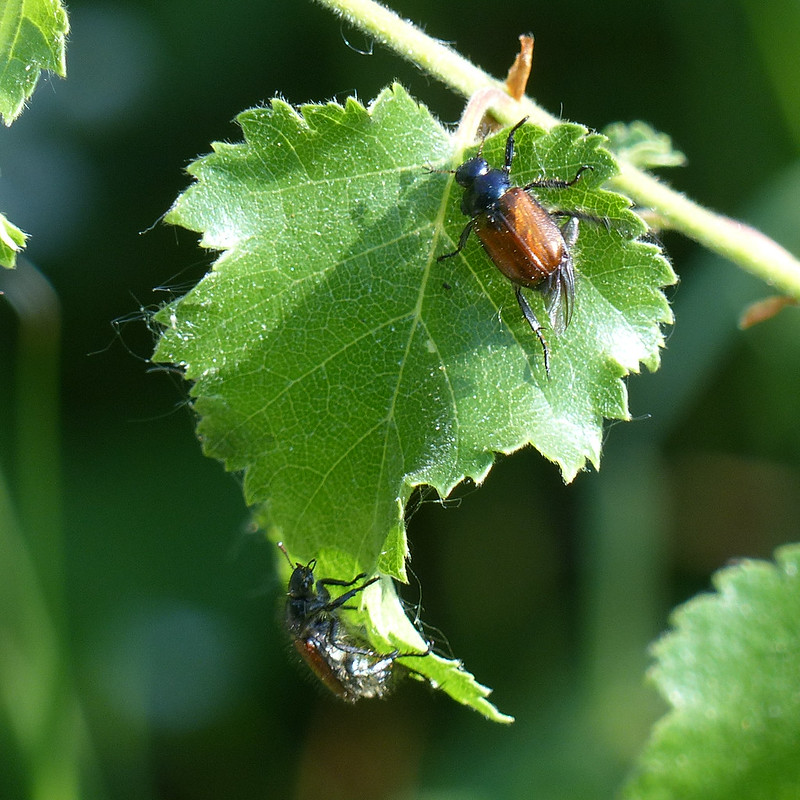
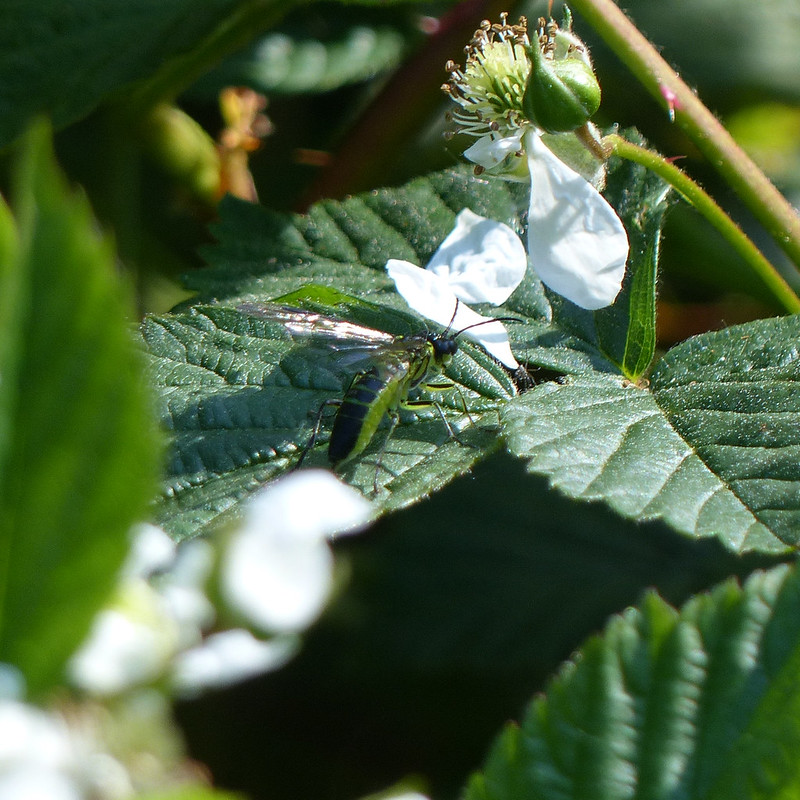


These flies with orange at the base of their wings were also quite ubiquitous, always on flowers.

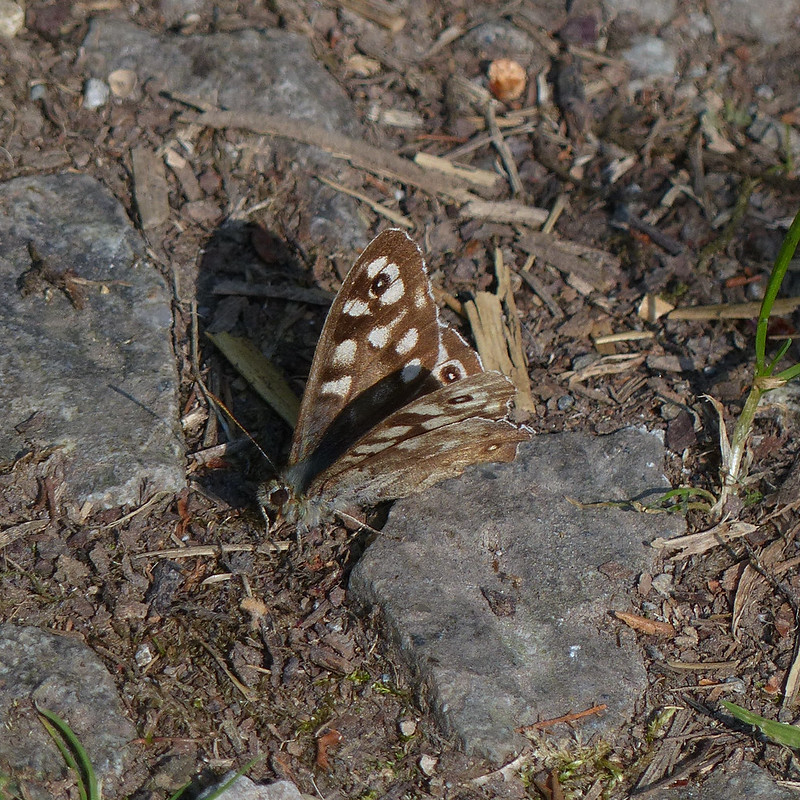

Once I reached Dobgill Bridge, I turned uphill, away from Thirlmere, on a very familiar path which had changed beyond all recognition, since the forestry through which the path used to rise had largely been clear-felled.

Once the path entered the trees, it seemed clear that it isn’t used as heavily as it used to be (before the road was closed) and the trees were encroaching on the path.

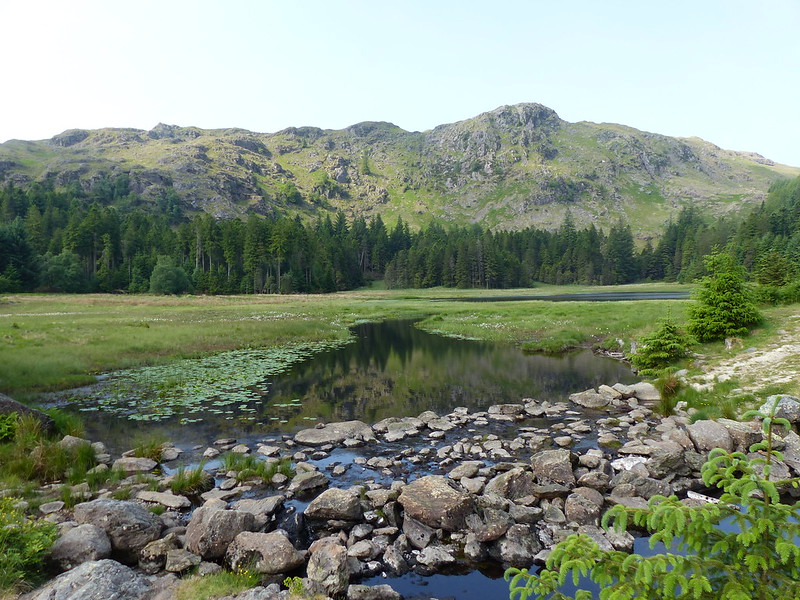
Where Dob Gill leaves Harrop Tarn there were once again lots of fritillary butterflies about, which I chased to no avail, but there were also, without exaggeration, hundreds of Four-spotted Chaser Dragonflies about, with which I had a bit more success…
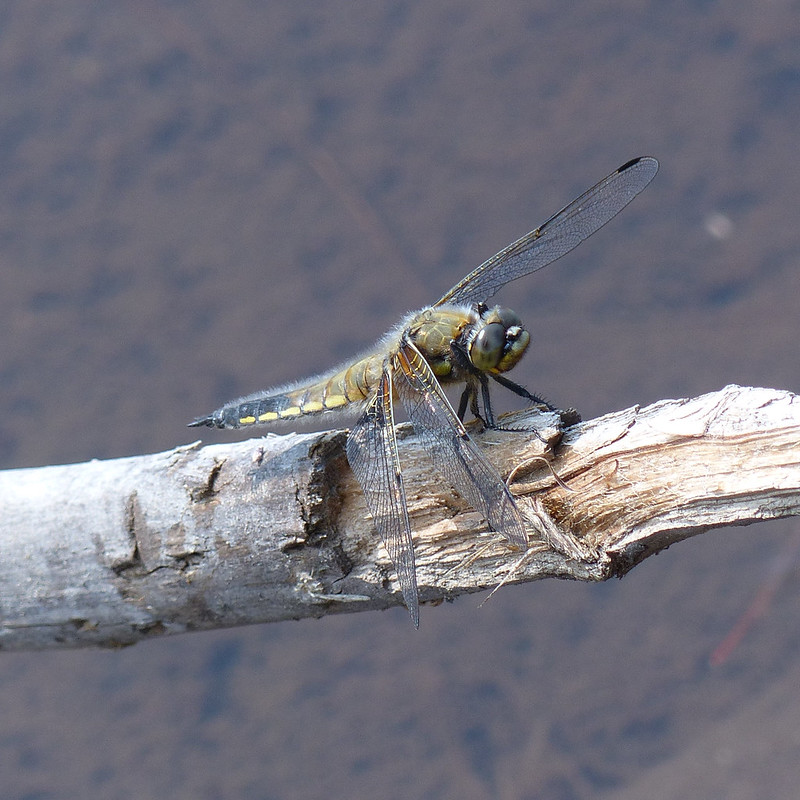

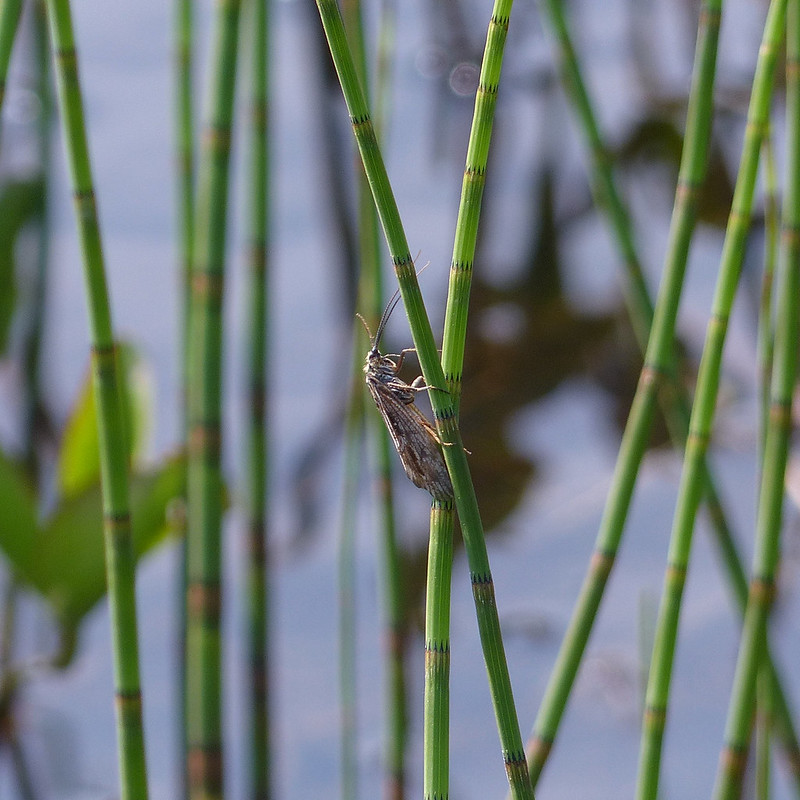
I think that this is a Caddis Fly. Closed related to lepidoptera, apparently, there are 196 species in the UK and Google Lens is not giving me much help in pinning this one down.

The Bog Bean had mostly finished flowering, so I had to content myself with a photo of this one, which was quite far out into the water.


I continued around the tarn a little way and then found a small path making a beeline for the shingle beach you can just about see on the extreme right of this photo.
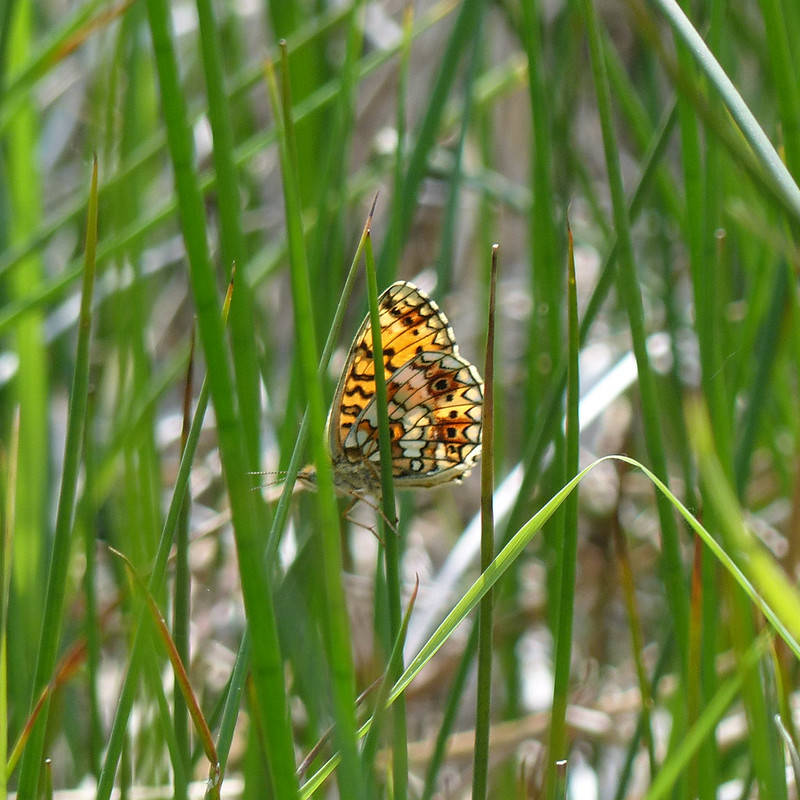
As I approached the tarn, I finally managed to get a photo of one of the butterflies which had been eluding me: a Small Pearl-bordered Fritillary.
Down by the tarn, there were lots more…

I was intending to swim, but first I was distracted by a profusion of butterflies, dragonflies and damselflies which were about.

When I eventually dragged myself away, the beach was perfect: it shelves steeply so that two strides and I was in. The sun shone; the water was cool, but not cold; there were constant splashes around me as fish (brown trout?) leapt from the water to take flies; dragonflies and damselflies skittered about just above the surface of the tarn. In short, it was idyllic, and I took a leisurely tour widdershins around the tarn.
Once out of the water, I was busy again taking no end of photos.
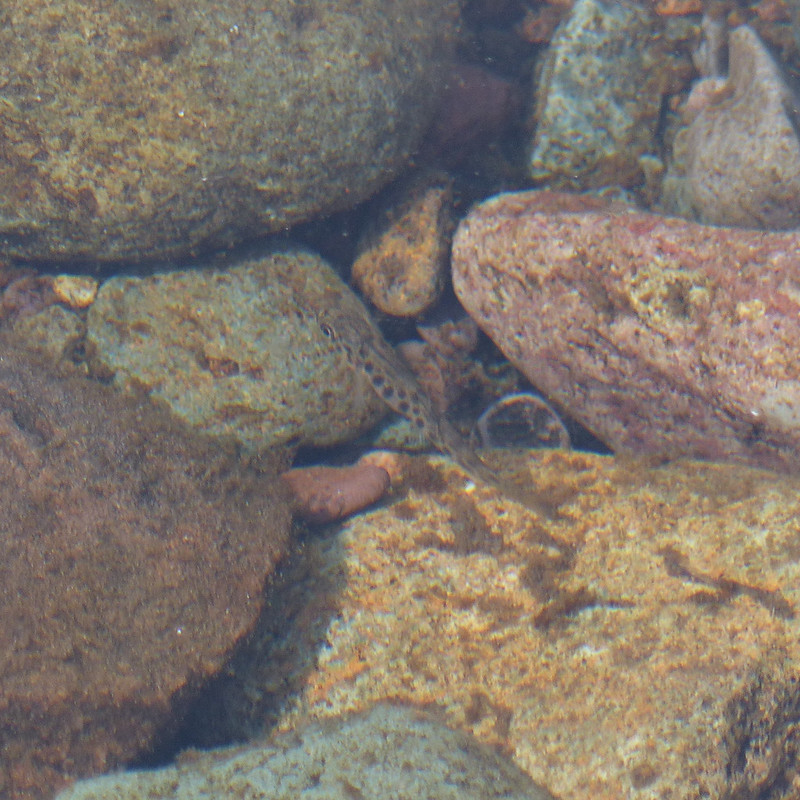

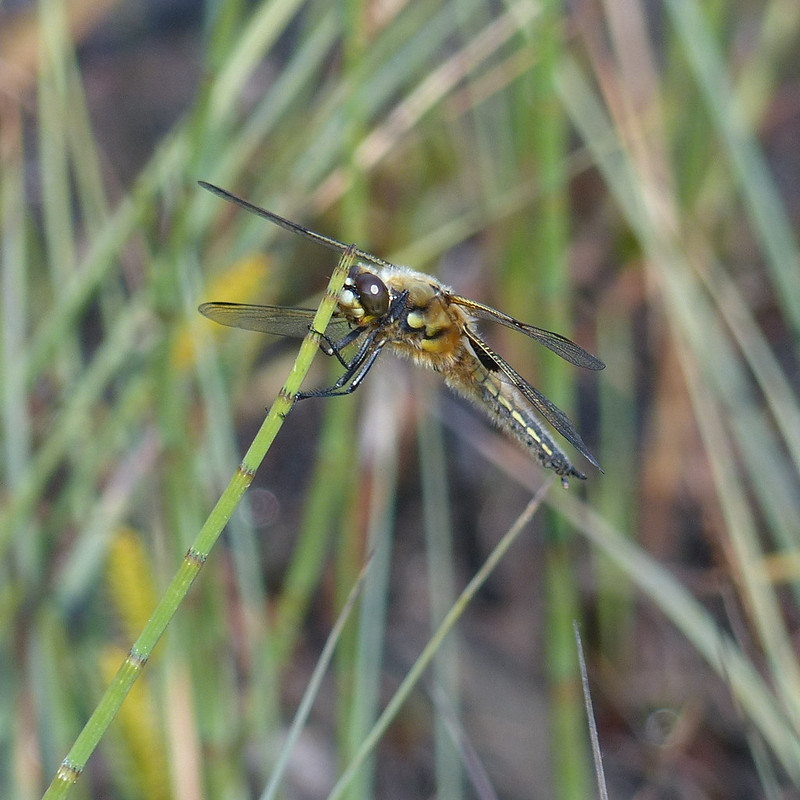

There were both blue and red damselflies about, but predominantly red. It was hard to get photos, because they were constantly on the move, perhaps because they didn’t want to fall prey to the Four-spotted Chasers which were also abundant.

Even the mating Large Red Damselflies, of which there were many, many pairs, kept flying about, with the male still grasping the female by the neck.

On the right here, she is laying eggs, whilst he is still in flight, hovering, hence the blurred wings.
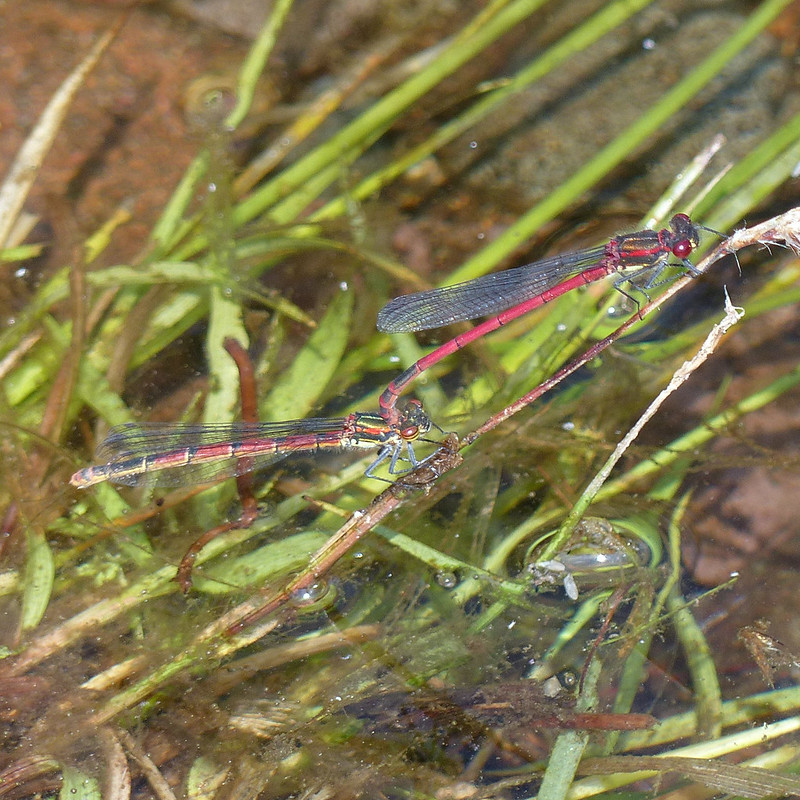
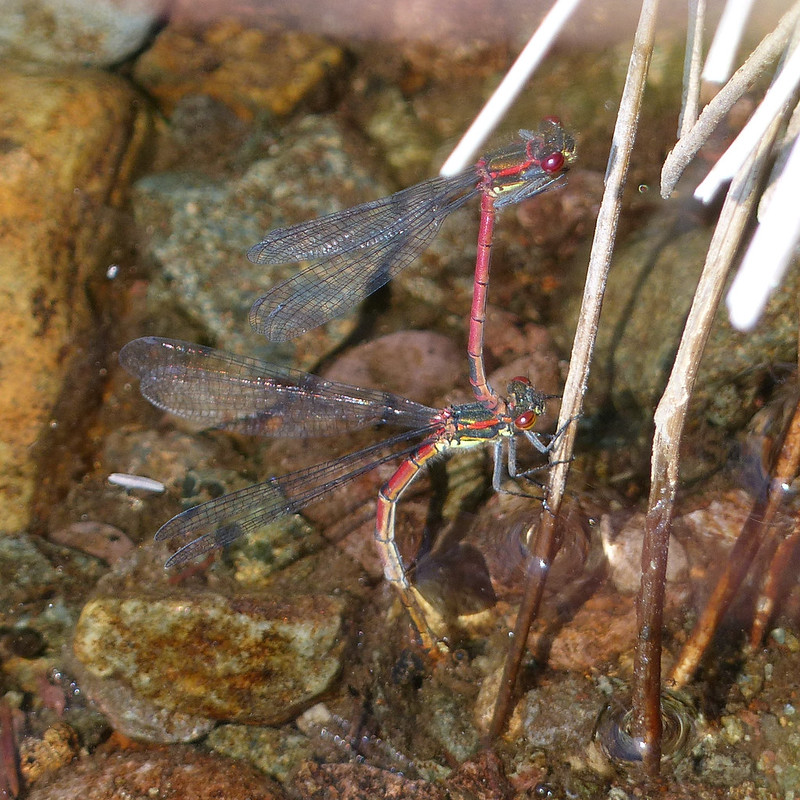
I have several more photos of mating pairs, so there is obviously a healthy population here.

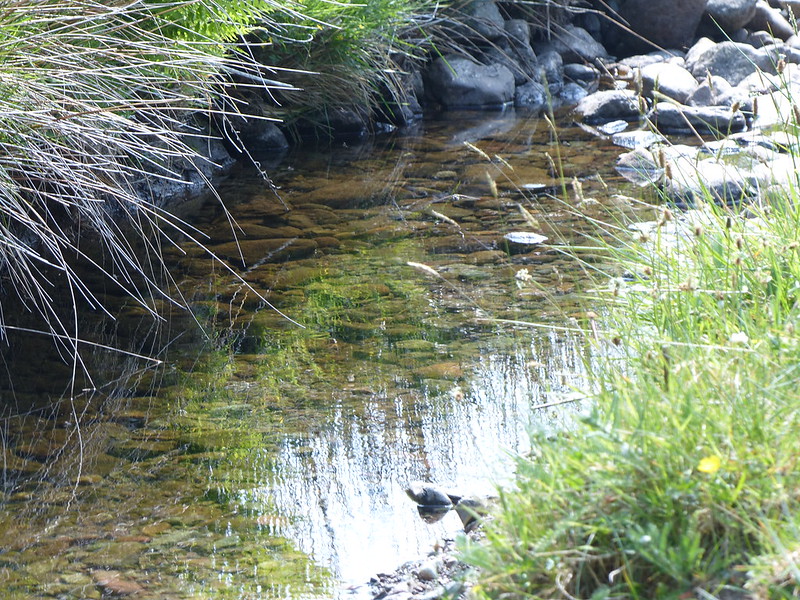
There was one, or possibly two, Golden Ringed Dragonflies flying very quickly along Mosshause Gill, which flows into the tarn near to the shingle beach. It’s a large and spectacular dragonfly, but was moving to quickly for me to manage any photographs. Since the flights along the stream were regular and predictable, I decided to stand in the stream bed to try to capture an image of the dragonflies, and you can sort of see one in the photo above. I have better photos, here from a few years ago.
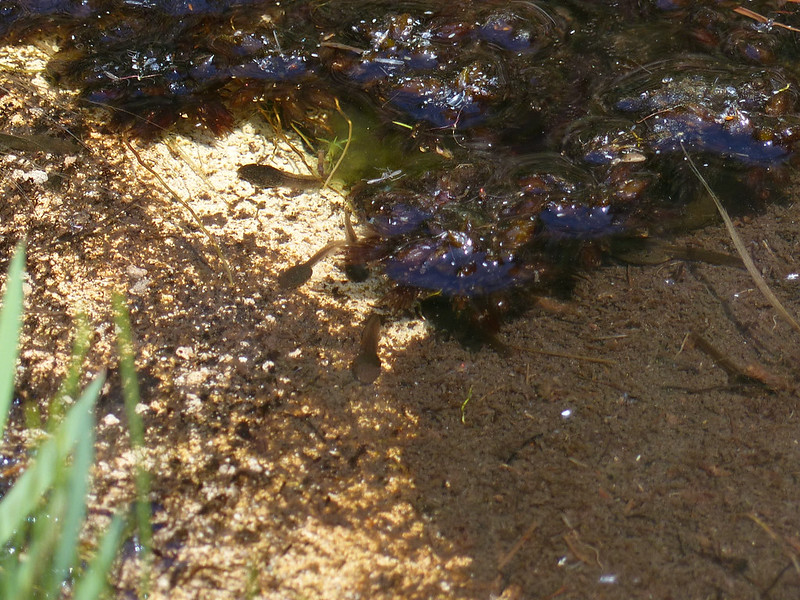
The path through the forest was hot work. When I reached open country, I turned sharp right, along the edge of the trees to head for Brown Rigg…
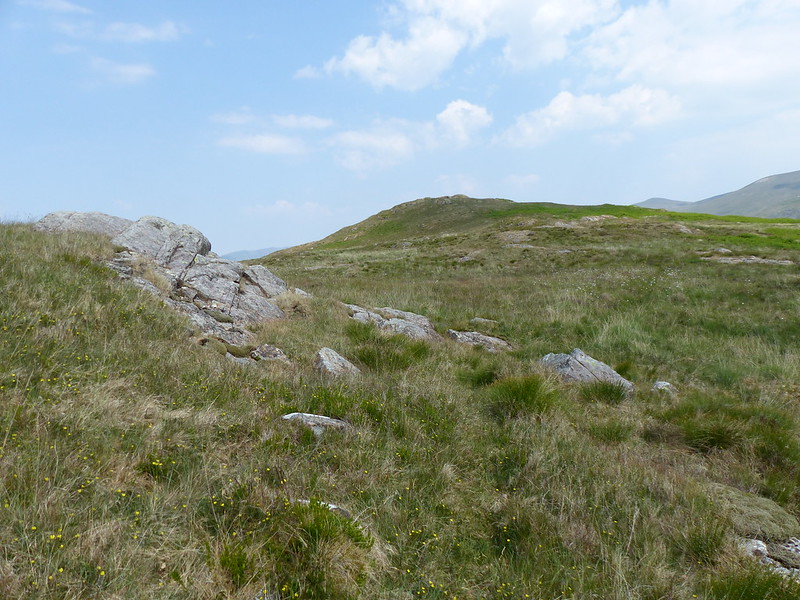
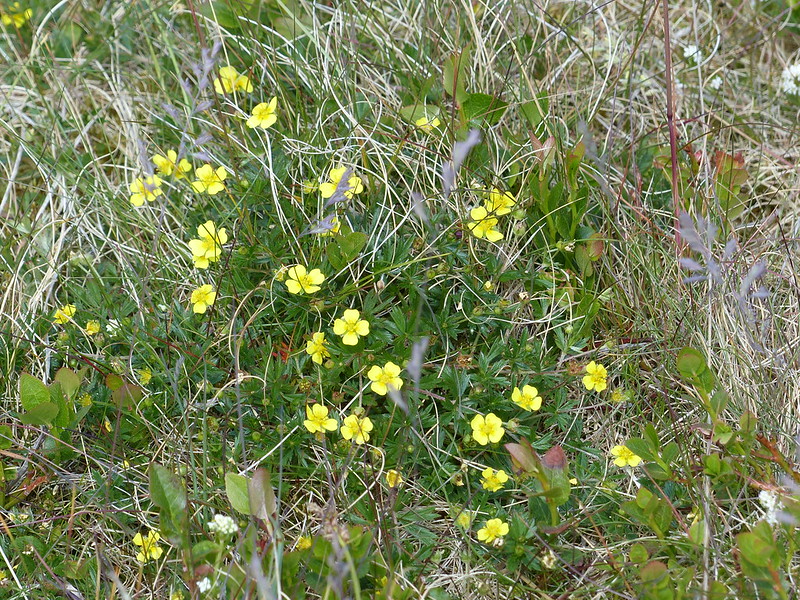

Brown Rigg is one of those Birketts which take you off the beaten path and make Birkett bagging well worth while. From Brown Rigg there’s a fine view of a rocky little top called either Blea Tarn Fell according to Birkett, or Bell Crags in the Fellranger books by my name-sake Mark Richards.
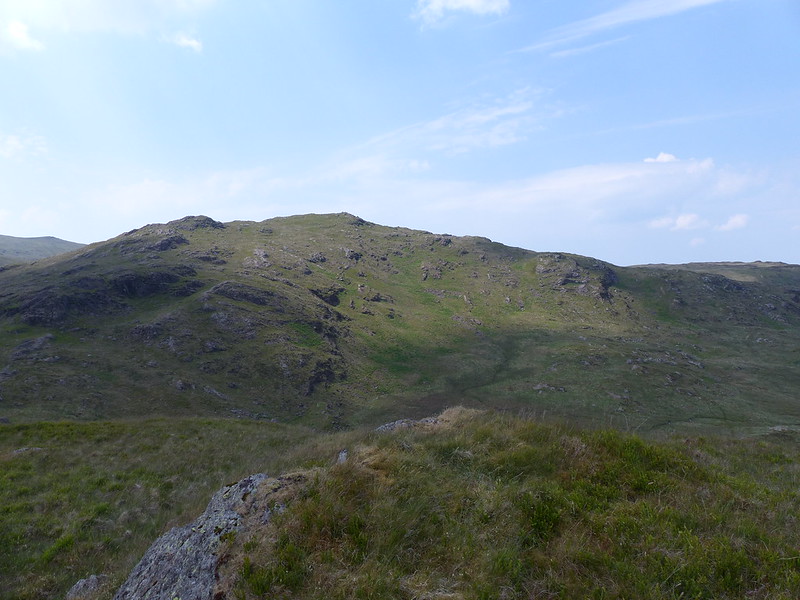
Whatever the name, it’s a really handsome fell and another which it would be a shame to miss. First though, I had unfinished business…
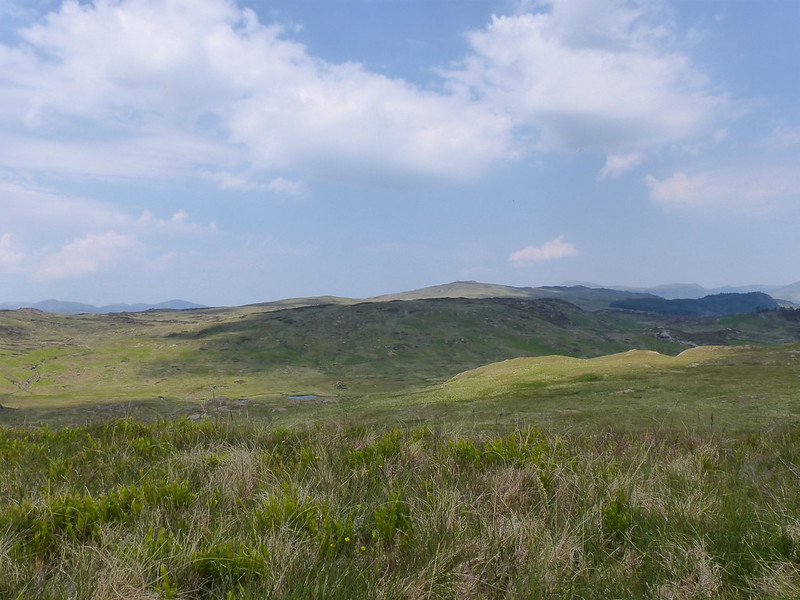
Ordinarily, I think this route would be madness, but I was able to head down to Launchy Tarn and then climb from there on to Armboth Fell. I won’t say it was dry, but it was dry enough.

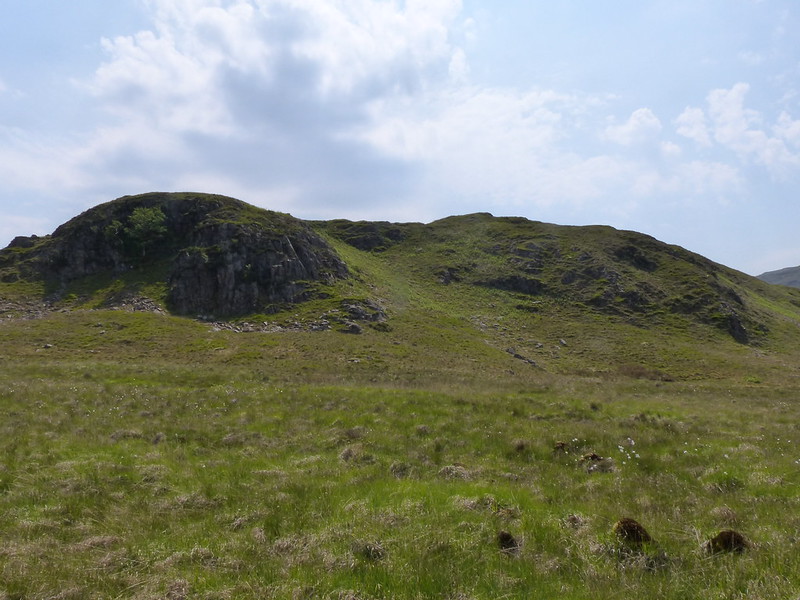
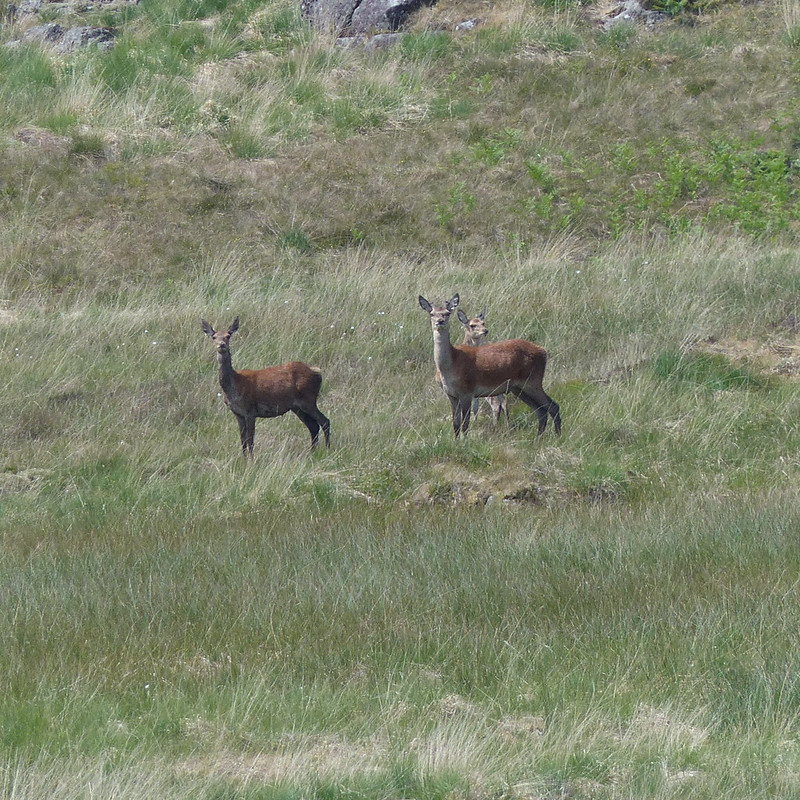
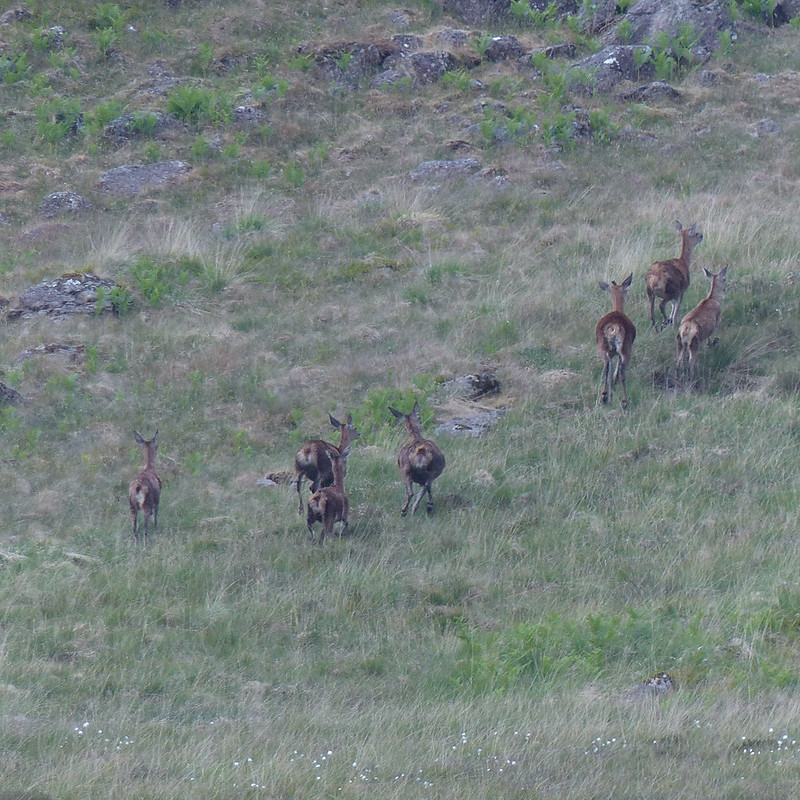
Years ago, I used to bivvy with friends in this area, above Harrop Tarn, and then explore the rather complex, boggy and empty terrain between there, Ullscarf and High Seat. I have a real soft-spot for this area, partly because it a great place to see Red Deer.

I was still seeing Four-spotted Chasers, wherever there was a bit of open water.
I had wondered about another dip, in Launchy Tarn, but it didn’t look deep enough, or particularly inviting.
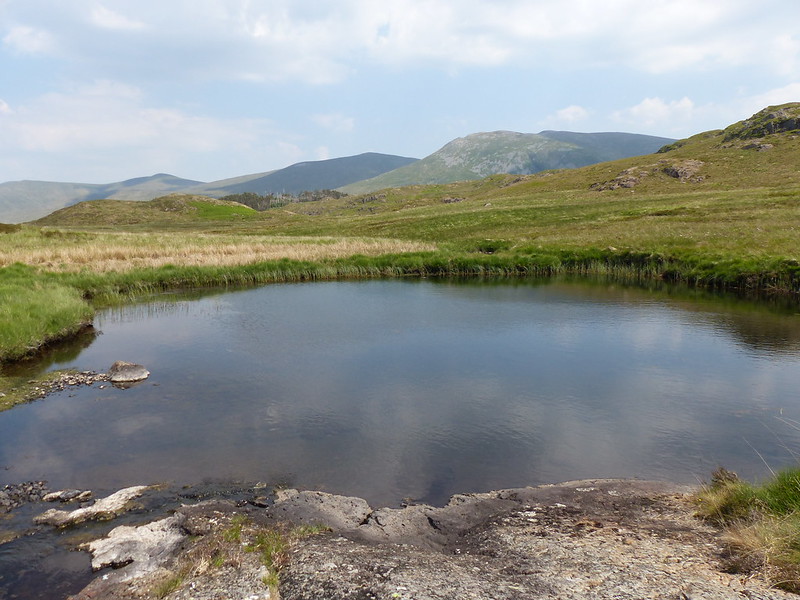

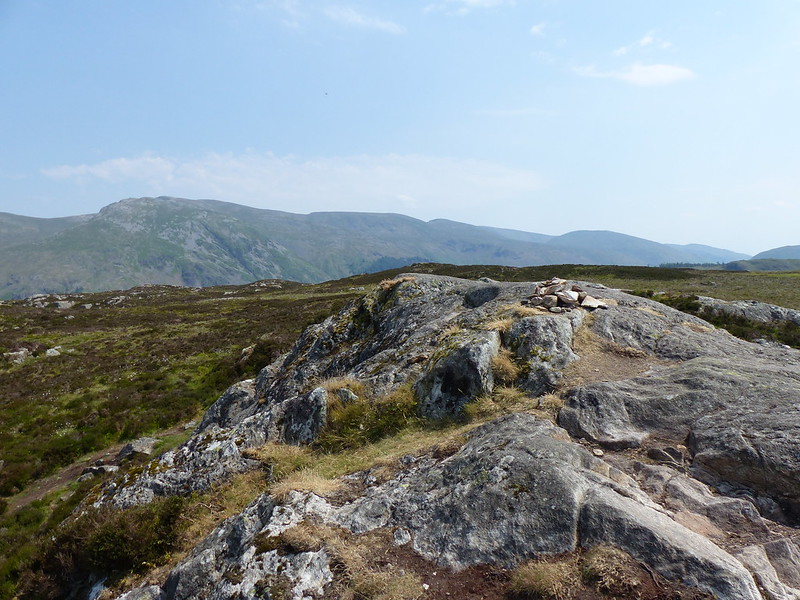
This rocky little rib gives Armboth Fell a quite dramatic top, not at all in keeping with the rest of the hill. I did visit a couple of other nearby knolls, just in case they were higher!
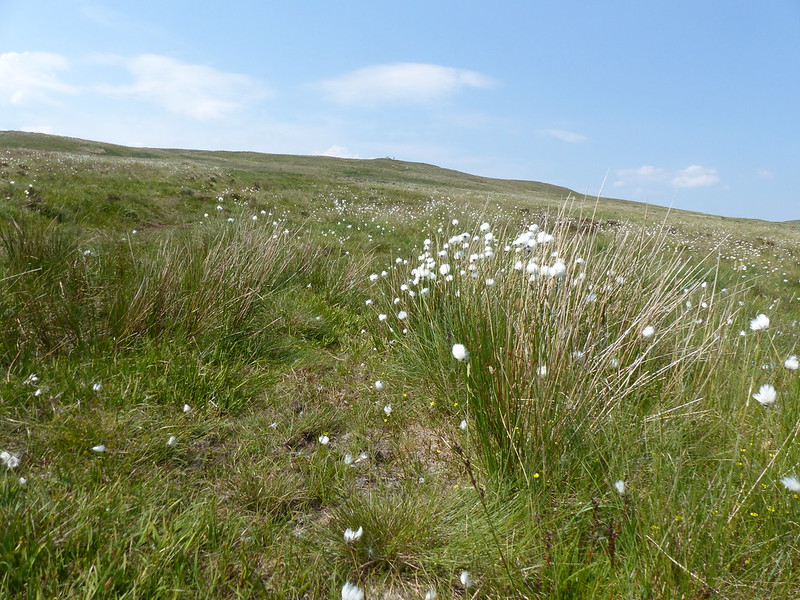
From Armboth Fell, it’s a fairly short walk to High Tove. I think that’s about the most that can be said for High Tove.


The walk southward along the ridge was actually pleasant with little sign of the extreme boginess which usually presides here. I made sure to summit every little outcrop, since there are numerous Birketts this way.
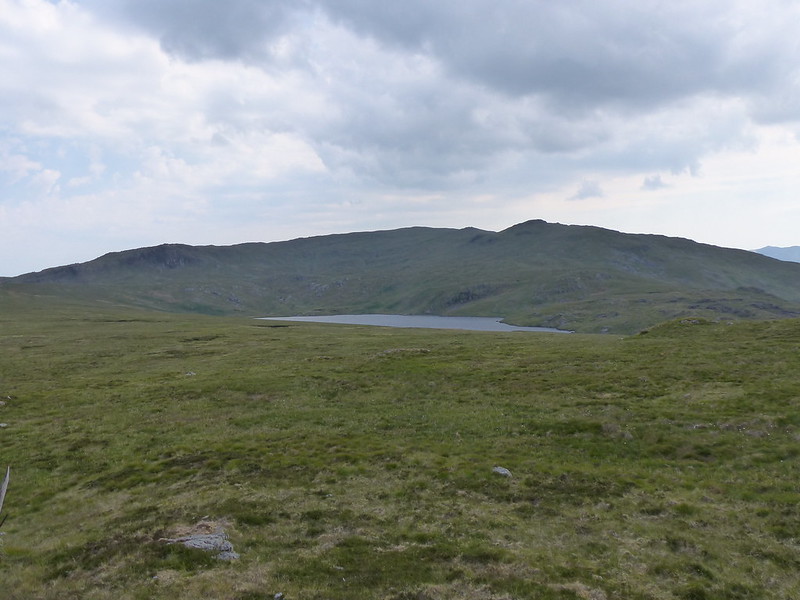
I had been planning to include a swim in Blea Tarn, but it had clouded up, and I suspected that time was marching on. (My new phone arrived while I was out, so without a phone, I didn’t know the time. Quite odd – but in a pleasant way, since I had all the hours that June daylight affords to complete my walk.)
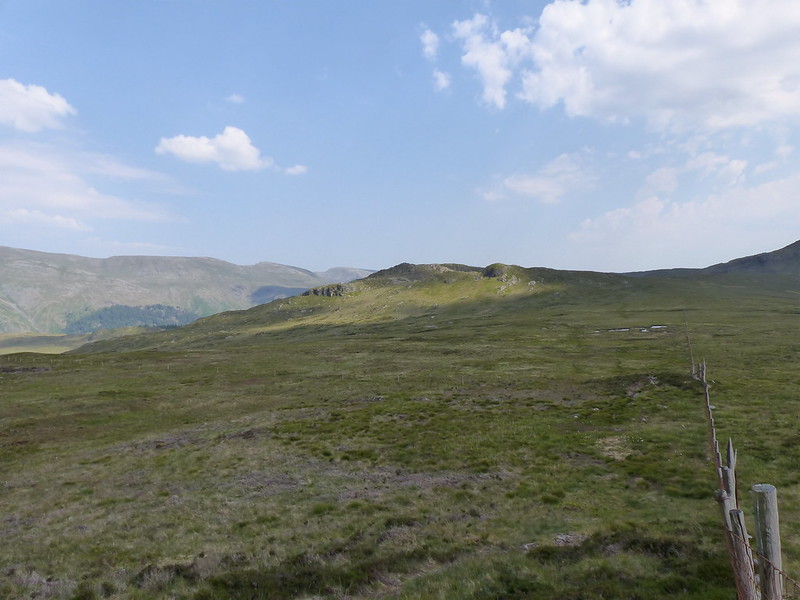

Blea Tarn Fell and/or Bell Crags really is a cracker, with superb views, I can definitely recommend it.

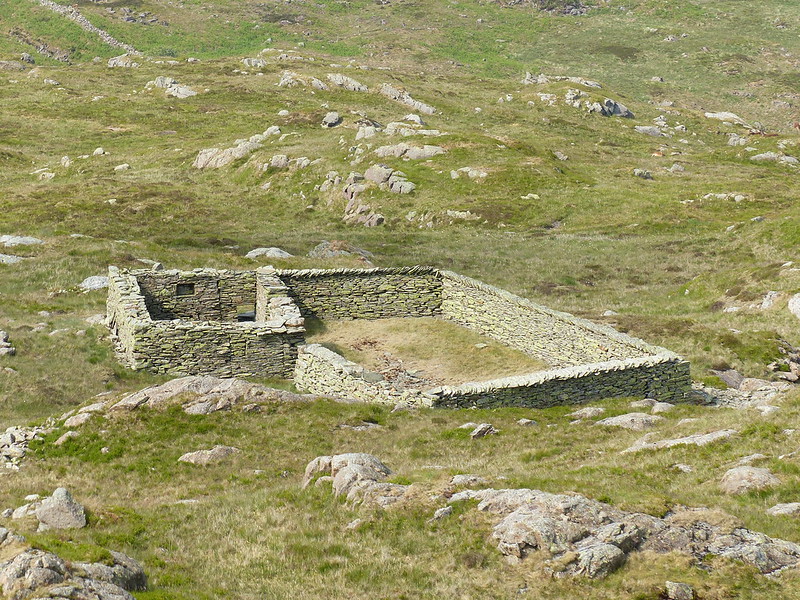
From there I returned to Harrop tarn and then took the footpath down the edge of the forestry back to Dobgill Bridge, then back along the shore to my car. The path turned out to be very rocky and a bit awkward – I think I prefer the path I used on the way up.
I did see these Butterwort by going that way…

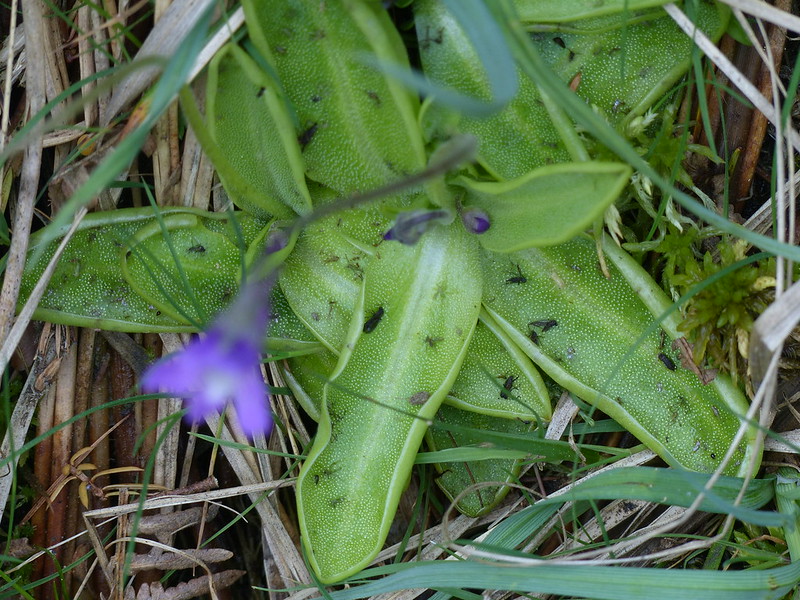
“Common butterwort is an insectivorous plant. Its bright yellow-green leaves excrete a sticky fluid that attracts unsuspecting insects; once trapped, the leaves slowly curl around their prey and digest it. The acidic bogs, fens and damp heaths that common butterwort lives in do not provide it with enough nutrients, so it has evolved this carnivorous way of life to supplement its diet.”
A terrific day, with lots of interest. Harrop tarn has shot to the top of my list of favourite places to swim and Blea Tarn Fell has firmly cemented its place in my affections. I can definitely see myself coming back this way in June next year: I fancy a wild camp in this neck of the woods.
No MapMyWalk stats or map, for obvious reasons, but here’s a map so that you can trace my route for yourself:

Always think Wainwright made a mistake with Armboth Fell, should have chosen Bell Crags and completed a long line of fells with High Tove, High Seat, Bleaberry and onto Ullscarf
I certainly think he should have included Bell Crags. Having said that, I’ve often thought that about Little Stand, but when I’m up there I appreciate how quiet and unvisited it is. I suppose, since he doesn’t ever give any criteria for which tops he chose, it’s fairly arbitrary and difficult to find fault with. Standing Crag and Low Shoulder, which are both Birketts and neither really summits as such, are both well worth a visit too.
Fabulous post with tons of superb photos of natures variety. I think we did a walk around there with and a whole host of us and went Birkett bagging on a very fine day. Harrop Tarn doesn’t look deep enough in the photos for a swim
We did, a superb day; it’s on here somewhere. I’ve been back recently and have some decent photos from the part of the tarn where we actually entered the water – it shelves very steeply, two strides and you’re out of your depth; how deep it is, I don’t know, but it’s deep enough.
Noted as another wild swimming spot to try. I used to prefer rivers but that’s mainly when I have some company to mess about in jumps etc. when solo or with Jane I much prefer lakes and reservoirs now
It’s small enough that you can swim right around it, but big enough that when you do it feels like a bit of an adventure. It’s usually hard to find rivers or streams where you can actually swim very far and I’m not so keen on jumping in these days, hurts my ears. B has taken his friends to Tongue Pot a few times, but none of them will attempt the mega-leap, only B. Makes me feel like maybe I’m not as timid as I’ve always suspected myself of being!
I still love rivers but jumping in and scrambling about just isn’t the same without company, whereas a long swim in a lake is something that’s still enjoyable solo or with less adventurous people. When I was at Wolfs Leap last weekend I said several times “the DBs would love that jump” or “Mark would love this bit of narrow gorge”. We are lucky we have a couple of local rivers with stretches big enough for a longer swim
Idyllicly beautiful in so many ways!
Indeed it was, particularly the swim.
[…] with Harrop Tarn being my new favourite swimming spot, after my visit last June, I was keen to share it with my nearest and dearest, so when A asked about a potential […]